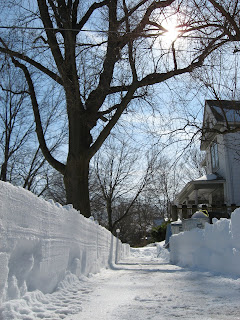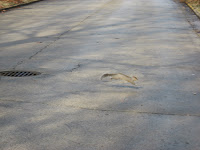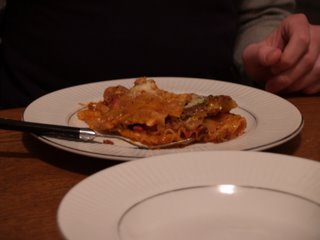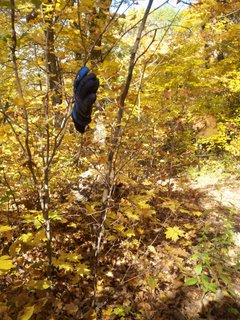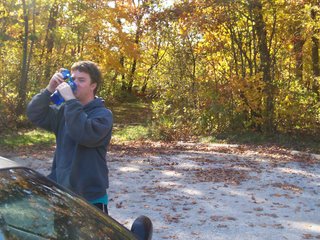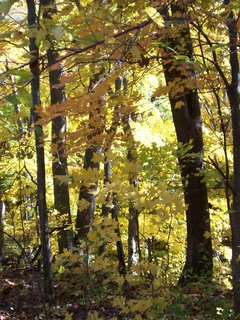Monday, April 30, 2007
Thursday, February 15, 2007
Sunday, December 31, 2006
Thursday, December 14, 2006
Ryerson Fellowship

Here is a map of locations I will visit. However, my travels will not be limited to the places mentioned, it is more of an open ended type of research. Anywho, a list of specific places:
Paris
Parc André Citroën
Jardin des Plantes
Tuileries
Jardin du Luxembourg
Promenade Plantée
Parc de Bercy
New Musée du Quai Branly – ‘green wall’ façades by Patrich Blanc
Fondation Cartier
Chaumont-sur-Loire, France
Mobile! Gardens for a World in Motion Festival
Lille, France
Transphotographiques photo festival
Bretagne region in France
Fallow environments in the Bretagne landscape
Saarbrücken, Germany
the Hafeninsel (Harbor Island)
Zurich, Switzerland
ETH school for landscape studies
Ruhr District, Germany
Ökologiestation des Kreises Unna
Kokerei Hansa Dortmund
Schurenbachhalde
Landschaftspark Mechtenberg
Duisburg, Germany
Landschaftspark, Duisburg Nord
From the Introduction to my proposal:
“Curiosity suggests something altogether different: it evokes ‘concern’; it evokes the care one takes for what exists and could exist; a readiness to find strange and singular what surrounds us; a certain relentlessness to break up our familiarities and to regard otherwise the same things; a fervor to grasp what is happening and what passes; a casualness in regard to the traditional hierarchies of the important and the essential.”
--Michel Foucault, “The Masked Philosopher”
Nature is re-entering urban and post-productive landscapes in various forms and scales, from weeds popping up in cement cracks, to takeovers by invasive species. The collapse of the industrial economy and consequent abandonment of infrastructure have created opportunities for what Christophe Girot calls ‘new nature’ ecosystems. Different from first, second, or third nature, “new”—or, what I call “fourth”—nature is that which occurs in the absence of human agency in settings that have otherwise been culturally transformed. Such places have much to offer to the curious observer. They reframe nature as a thing of wonder—a performing, transforming, interactive marvel—and they raise questions about how “new” or “fourth” nature might be courted through design. Can landscape architects work with nature without dominating it? How might they create places open to the potentials of nature yet still responsive to multifaceted human demands?
To paraphrase Bernard Tschumi, landscape architecture is defined as much by the actions it witnesses as by the spaces shaped. Landscape architects are perhaps more inclined than architects to accept unstable conditions and uncertain demands and to seek out opportunities for indeterminate experiences. To design with fourth nature, landscape architects must understand natural processes and ecosystems specific to the places where nature is emergent. Armed with that knowledge, they might foster conditions for “wilderness” within the context of a specific program. Acknowledging that wilderness is already a human construct, instances of fourth nature need not be physically or conceptually isolated as if preserved nature, but can manifest characteristics appropriate to human occupation and exploration. In this approach, the profession of landscape architecture is more deeply integrated with both the natural sciences and urban and regional planning. Fear of the unknown, relentless romanticism, and nostalgia for the picturesque are three driving conditions that detract from the practice of contemporary landscape architecture. One way for the discipline to move forward is by embracing process and understanding ‘new nature,’ thereby cultivating a new approach to place-specific design. Human-made wilderness is both sustainable and transformative. Fourth nature is a form of performance art, in which the players are plants and the scenarios are improvised according to their inclinations within context.
Post-productive landscapes can be found in cities, their margins, and rural areas alike. Whether a former factory within urban fabric, an abandoned airstrip, or a forgotten agricultural field, these places offer starting points for understanding nature within cultural landscapes. Nature colonizes derelict sites according to its own logic played against context. Such situations present raw and honest demonstrations of the current state of natural processes, and they have a real beauty. Yet, they are also precarious, particularly in urban settings, because post-productive landscapes are prime targets for open space development; there are serious pressures and programmatic demands for their use, even though many urban spaces do not have the financial viability to sustain more traditional approaches to landscape design. Accordingly, there is a significant need for viable alternatives.
Becoming specialized in fourth nature and understanding its potentials means embracing experiment as a form of design practice. If landscape architecture is to progress as an art, we must get beyond fear of the unknown and learn from the order of nature in its current manifestations. Through experiment, design is reimagined not as imposition but as negotiation between people and nature.
Sunday, December 10, 2006
Urban Design Studio Project > 2006





Final studio project - LA 437 > Re-design a space in the urban fabric. This design explores possibilities of engaging in a conversation with plant performance. I am curious to see different responses of plants continuously bathed in a certain colour of light, conflated with human responses to the same wavelength. Design on a range of time scales, from the light show, to human engagement and exploration, to the more gradual plant performance. For those of you biologists I am curious to see what you think, whether this would even be possible, I don't know...The pragmatics of this haven't been entirely figured out, but light would be separated using prisms in the form of planar panels. I'm not sure what the effects of daytime ambient light would be upon this experiment. The lights above probably would have to become more focused to concentrate the light into the prisms. I made a short quicktime movie, which was spliced together using short clips taken from the following super cool website: Plants in Motion--Alas, another semester over, one more to go...



